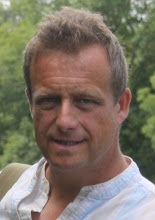The days are longer and have seemed warmer, and our thoughts have stretched away from the fire to the garden and the outside world. Our attitude if not the weather is becoming spring-like, vernal. I want to be outside, planting and gardening. My year has turned a corner and is heading for the summer, even on a cold night like tonight.
I lost a few entries in January and early February and with moving house I lost the attention to small detail that I was trying to bring to the Journal. And I have been without a camera for a month now. But 'them's the breaks' and a small consideration. I have enjoyed writing these observations and think it a good thing for a writer to work to even self-imposed deadlines.
Another letter to an unknown reader. Thank you for reading and following my Season. No more of this Journal, but a Summer Journal will complete my on-line Year, and I will continue to write the landscape writings and Walkpoints blog.








